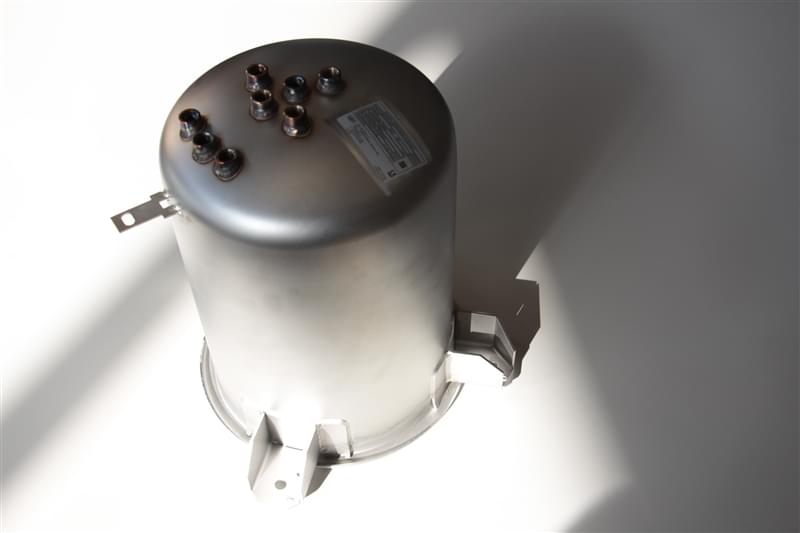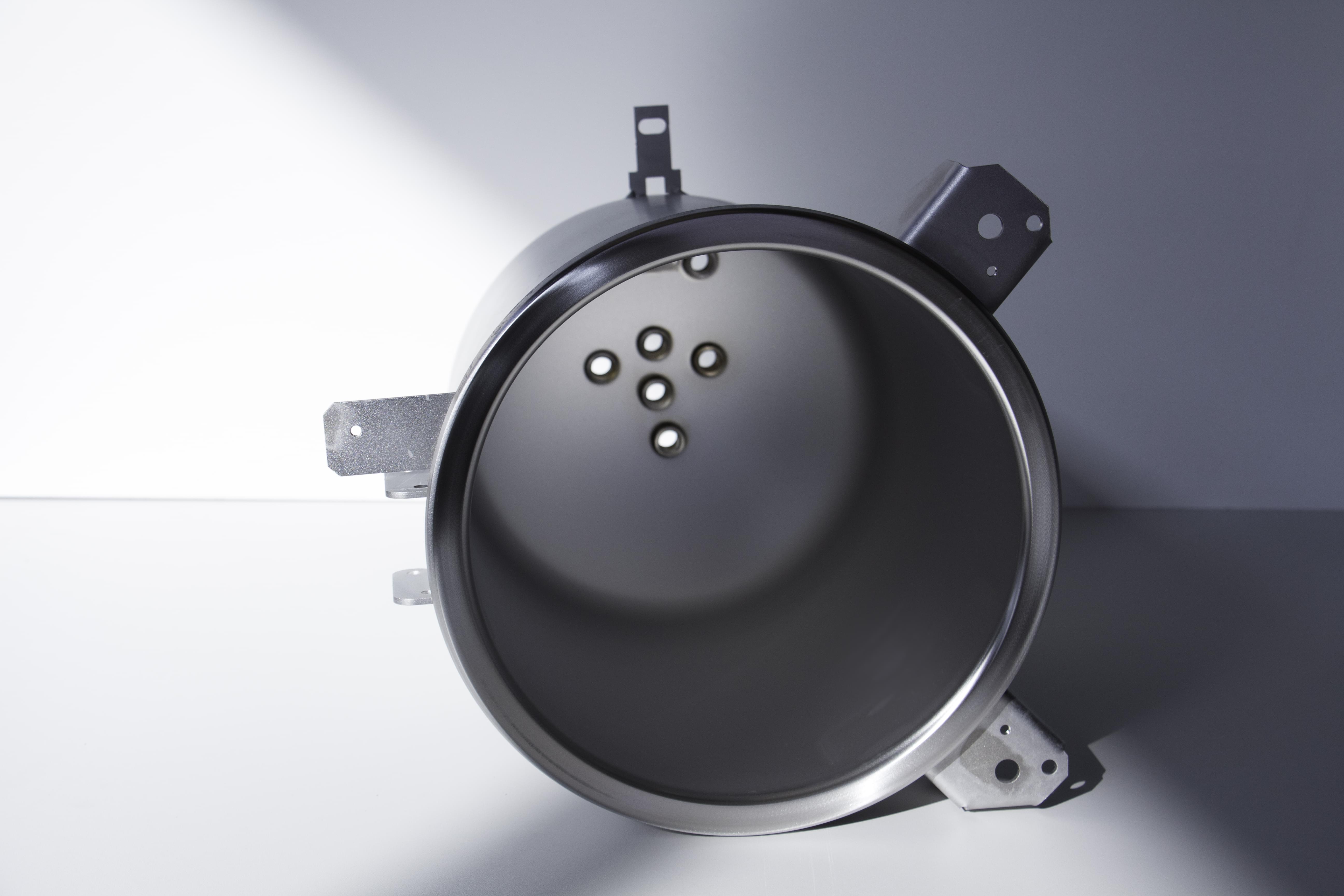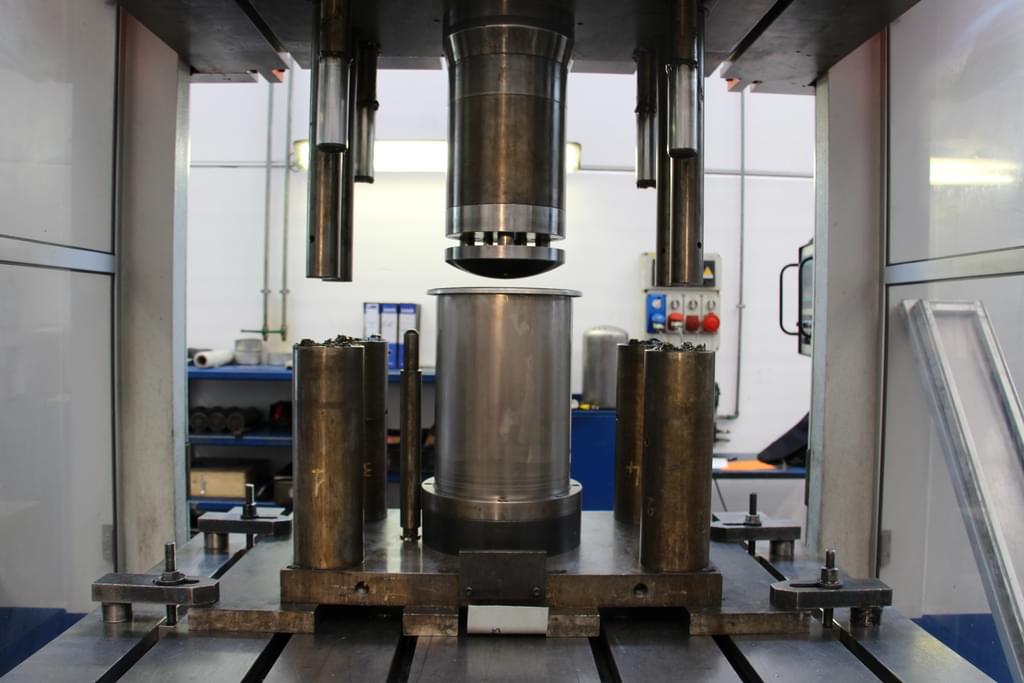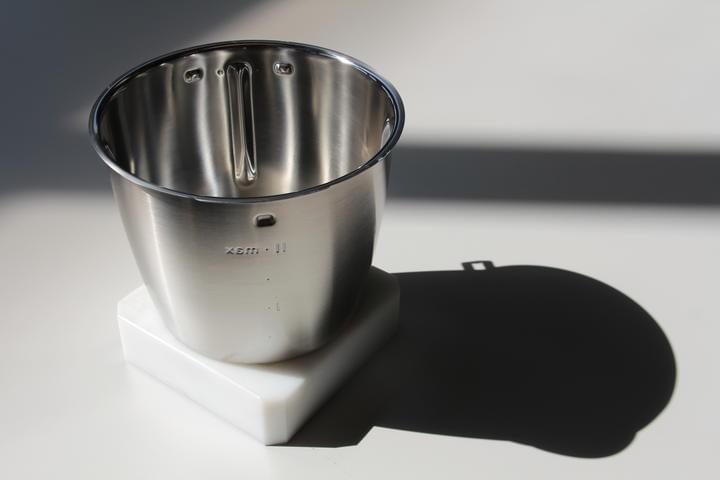Deep draw stamping: Minifaber's tailor-made solutions

Minifaber specializes in the construction of customized stamping dies tailored to specific requirements for the production of any shape.
Minifaber specializes in the design of unique and customized deep draw stamping dies, suitable for the production of various shapes.
Let's see:
- The process of deep draw stamping metals
- The deep draw stamping dies made by Minifaber
- The characteristics of a good deep draw stamping die
- The metals that can be deep draw stamped using a die
- Case study: deep draw stamping dies for Vorwerk
- The advantages of choosing Minifaber.
The process of deep draw stamping metals
Among the various metal processing methods carried out by Minifaber, there is also deep draw stamping. Deep draw stamping is a bending operation of the sheet metal, which consists of deforming it to give it a final concave shape, usually a box, cylinder, or cup, by means of a deep draw stamping die.

The die consists of two parts, the die and the punch:
- The die is the lower part of the die and is fixed to the deep draw stamping machine. It has a concave shape that defines the shape of the object that is to be obtained and can be made of various materials, such as steel or tungsten carbide, depending on the quantity of use and the required hardness.
- The punch, on the other hand, is the upper part of the die and is pushed into the die to deform the metal. It has a complementary convex shape to the die and can also be made of strong materials, such as steel or titanium.

When the punch is pushed into the die, the metal is deformed following the predetermined shape, thus creating the desired object. The final result, free of wrinkles and creases thanks to the cold action of hydraulic presses, will be a container with a more or less deep cavity, such as a pot or a can.
It can be easily understood why a correctly made die is crucial in the process: a small mistake is enough to ruin the final result. At Minifaber, we use a 3D program to simulate the process and final success virtually, in order to avoid any errors.
If you are looking for a company specialized in deep draw stamping, contact us! We’ll provide you with advice tailored to your needs.
How we complete deep draw stamping at Minifaber
The deep draw stamping process begins with the design and construction of drawing molds, specific to the shape you want to make.
All the molds used by Minifaber for metalworking are fully made in-house. This is because such a choice entails a series of truly remarkable advantages:
-
- Excellent results in terms of precision and quality of the drawn piece.
- Time and production resource savings.
- Construct any particular customer request that can count on a personalized mold production service.
In fact, Minifaber has made customization its strong point and, thanks to the experience accumulated over years of attentive activity, is able to meet all customer requests, even the most complex, to create the desired finished product. Or, if the design requires it, Minifaber can also produce semi-finished products.
The characteristics of a good deep draw stamping die
The characteristics of a good deep draw stamping die depend on the type of metal to be formed, the shape of the object to be produced, and the specific requirements of the production process. Generally, a good deep draw stamping die should have the following features:
- Strength and hardness: the die must be made of durable and resistant materials, such as steel or tungsten carbide, to withstand the high pressures and mechanical stresses during the deep draw stamping process.
- Precision: to ensure uniform deformation of the metal and a good surface finish of the final object, the die must be designed and manufactured with high precision.
- Accurate geometry: the geometry of the punch and die must be accurate and meet the specific requirements for the shape of the object to be produced.
- Ease of disassembly and maintenance: the punch and die must be designed to allow for easy disassembly and maintenance of the parts, to ensure the possibility of replacing damaged or worn-out parts.
- Adaptability: a deep draw stamping die should be designed to be adaptable to different deep draw configurations, such as the use of multiple punches and dies, to maximize the flexibility of the production process.
Which metals can undergo the deep draw stamping process?
Most metals can be formed by stamping, however, their workability and strength depend on their chemical and physical characteristics. In general, the metals commonly used for stamping include:
- Steel: one of the most common metals for stamping due to its high strength and hardness, but also its workability.
- Aluminum: a lightweight and corrosion-resistant metal, widely used in the aerospace and automotive industries.
- Copper: it has good workability and high thermal and electrical conductivity, and is commonly used for the production of electrical and electronic components.
- Brass: an alloy of copper and zinc, and is used for the production of decorative and precision objects.
- Titanium: a lightweight and corrosion-resistant metal, is used for the production of high-precision aerospace and medical parts.
- Nickel alloys: nickel alloys are highly resistant to corrosion and temperature and are used in applications that require high performance, such as the oil and gas industry.
These are just a few examples of metals that can be stamped. The choice of metal depends on the specific needs of the customer, which we will investigate together during the design phase.
Deep draw stamping: Vorwerk chose Minifaber
Vorwerk, an international leader in the marketing of high-quality household products, has chosen Minifaber's experience and technique. In particular, Minifaber has created deep draw molds for Vorwerk to build the stainless steel bowl for their multipurpose food processor.
A great testament to Minifaber's international expertise.
The advantages of choosing Minifaber
The production of molds for metalworking, including deep drawing, is carried out internally, as well as the production of cut, drawn, and bent parts and the assembly of semi-finished and finished products. Thanks to this, customers who turn to Minifaber with a technical drawing or an idea of a piece to be made, find a team of professionals and a technological park that allows them to obtain the perfect finished or semi-finished product for their production needs.
The strategic and innovative core of the company is constituted by solid know-how, professionalism of human resources, continuous investment in innovation and a machine park always updated and specialized in different technologies. Minifaber is able to provide customized and high-quality solutions to its customers, with a complete service from design to final production.


